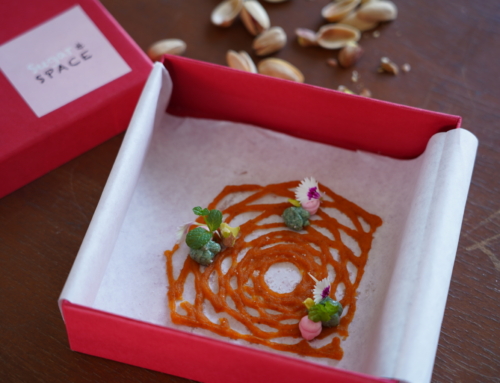I met tech-writer Patty by chance on the first hike around Stow Lake that we both went to back in 2015. We were both new to the city, open-minded and hit it off instantly. Soon enough, we were seeing each other every weekend, enjoying the outdoors and bonding over food. Along with her husband, Roscoe, we began exploring different cuisines and would meet up and embark on cooking adventures together. It’s been five years and since then we’ve moved to different cities, different coasts, different countries and even different continents. But, we continue to find our way back to each other through food. Though I haven’t tasted her family sinigang yet, this story makes me feel close to her, just like the other meals we’ve shared.
Ask any Filipino what his or her favorite dish is, and I imagine that sinigang would be up there in the list of most likely responses. Sinigang is a traditional Filipino tamarind-flavored soup cooked with beef and greens, typically served with plain white rice. Oh, sinigang. The very sound of the word has the power to bring to mind different episodes from my growing years. In the same way that a bite from a madeleine reminds Proust of Sunday mornings at Combray, a small sip of sinigang’s sour beef broth reminds me of the packets of Knorr sampaloc (tamarind) seasoning that my mom had to pour onto the soup as she cooked it.
“Is this enough?” she would tentatively ask us.
My younger sister, the sinigang connoisseur of the family, would cry out almost every time, “Mas maasim pa! (More sour, please!)”
Looking Back
This was the cardinal rule for making really good sinigang—the stronger the sour notes, the better. Anyone who grew up eating this dish will tell you that if it’s sour enough to make you grimace as soon as the broth touches your taste buds, it is good and ready to eat. I know it sounds weird, but my family—parents, aunts and uncles, grandparents and all—feasted on this dish together for many Sundays. And as kids, my siblings and I learned to love sinigang and the funny faces we made as we savored its sourness.
When I turned 16, my family and I moved from Manila to Florida. Most of my mother’s side of the family had been living here since the ‘80s. We were homesick for months on end. We missed our extended family and friends and pined for our formerly laidback, comfortable lifestyle. Worst of all, we had no comfort food to remind us of the sights and smells of home. Bereft of ingredients like tamarind and kangkong (water spinach), we had no sinigang. The allure of burgers and fries quickly faded, and eventually, my mom learned to be resourceful with her cooking. No kangkong? Let’s try green beans. No pechay (Chinese cabbage)? Bok choi should do the trick. The better she knew the area, the more imaginative she became.
Soon enough, our sinigang had small red radishes and collard greens from the Hispanic grocery, along with old ingredients like gabi (taro), patis (fish sauce), and Knorr seasoning from the Filipino store. My family and I became the taste testers for my mom’s experiments with sinigang. Miraculously, as the dish deviated more and more from the original recipe, the taste grew more like the distinct sour-salty one that we used to know.
Looking Ahead
I had some of my mom’s now signature dish a couple of weeks ago. As I reflected upon how much it’s evolved over the years, the flavor of the broth made me realize something. In the modest kitchen of my parents’ Florida house, we had a pot of perfectly good sinigang sitting on the stove. It was one of the surest signs that we had found home again.
Written by Patricia Noelle Cruz and edited by Jashan Sippy.
‘Food, the Feeling of Home’: A series of stories exploring nostalgia, the power of food, our memories and stories of ‘home’. Want to share your story? Send it to us at info@sugarandspace.in








Leave A Comment